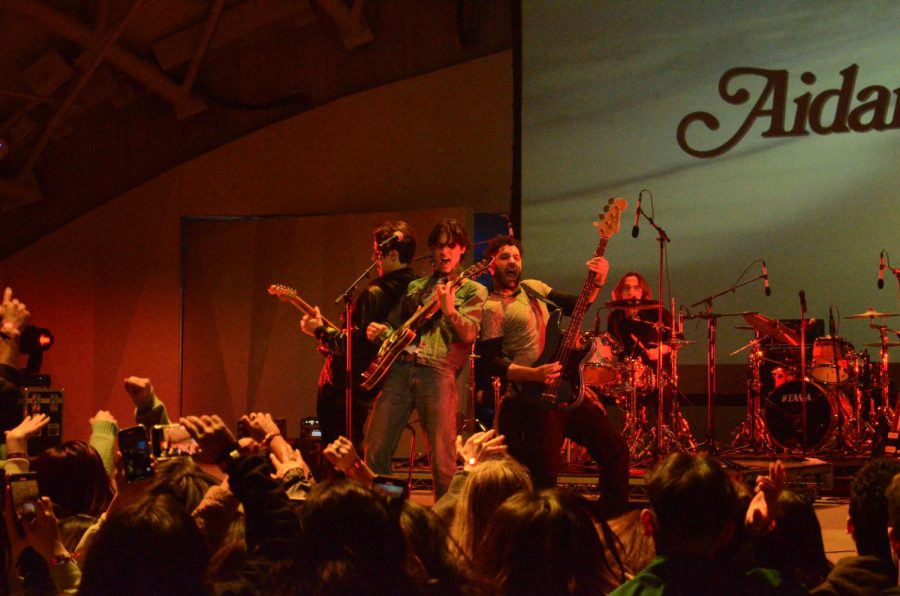The UCSD Natural Reserve System will be hosting an open house for the Kendall-Frost Mission Bay Marsh Reserve on March 1. The salt marsh will be opening its doors from 1p.m. to 4 p.m., providing a hands-on experience to all students, faculty and interested public. During this time, people will be given rare access to exotic species and plant communities, as well as have the opportunity to help clean the marsh itself.
The Kendall-Frost Marsh is one of four reserves the UCSD Natural Reserve System owns and maintains. A 16-acre plot along the northern edge of Mission Bay, the marsh boasts a highly productive spectrum of vegetation and wildlife. Its condition is particularly notable because the marsh is surrounded by urban development, but is still representative of a natural tidal salt marsh. The heart-shaped wetland sustains thousands of shorebirds and serves as home to several endangered species, including the light-footed clapper rail and Belding’s savannah sparrow. Amazingly, the Kendall-Frost marsh has forestalled the encroaching urban development to remain a breeding ground of immense biological productivity.
Although the Kendall-Frost marsh is a protected area, it is nevertheless feeling the growing pressures of urban development and pollution.
Beia Spiller, a fifth-year student intern for the UCSD Natural Reserves System, explained that 90 percent of the salt marshes in California have been destroyed due to major alterations to the surrounding land and water. Mission Bay itself was once dominated by extensive salt marshes, but has since been reduced to a 30-acre segment. Specifically, the Kendall-Frost marsh has faced increasing problems with the neighboring residential houses, parks and urban constructions.
“”The marsh used to receive water from the San Diego River,”” Spiller said, “”but it’s been blocked off by development. Really, urban run-off is the only water the marsh gets directly.””
The UCSD NRS is consequently seeking to educate the public on practices that harm the marsh. Spiller said that many Mission Bay residents see the marsh as an obstruction to the ocean view and are unaware of the damage they are inflicting on the natural wetland.
It is for exactly that reason that the marsh will be having an open house. Isabelle Kay, the academic coordinator for the UCSD NRS, hopes the open house will raise awareness of the marsh and gain public support and interest.
“”What people need to understand is that the major source of pollution in the marsh is from individual homeowners,”” Kay said. She explained that pesticides, fertilizers and “”urban drool”” are all residential sources of harm that directly affect the marsh. In addition, domestic cats left alone to roam the wetland are extremely harmful to endangered species and vegetation.
“”We’re looking for more interest on a community level,”” Spiller said. “”We want the neighbors to be on our side.””
In addition to the Kendall-Frost marsh, the UCSD NRS owns and maintains three other reserves, including the Scripps Coastal Reserve, which is located by the Muir cliffs. The NRS, which is a UC-wide organization, was created in 1965 in response to escalating destruction to wildlife field sites in California. The accelerating development and population left few sites safe from urban disruption, leaving much of California’s landscapes unusable for ecosystem research. The NRS was thus established to preserve and protect natural areas, as well as to increase understanding of the earth and its natural systems. The NRS is now the largest university-operated system of natural reserves in the world.
The various UCSD-maintained reserves have served as an outdoor laboratory and classroom for researchers to obtain a better understanding of ecological principles, as well as to observe the impact contaminating human expansion has on natural ecosystems. The Kendall-Frost marsh has supported many doctoral dissertations and long-term research by students and faculty.
“”One of the main reasons for the marsh is for students to come and volunteer or do research,”” Spiller said.
Kay furthermore explicated the importance of the marsh as a “”good benchmark for comparing other lagoons.””
With the Kendall-Frost marsh open house, the UCSD NRS will seek to encourage qualified research and will enlist community support for one of the last remaining salt marshes in Southern California.
For more information on the UCSD Natural Reserve System, visit their Web site at http://nrs.ucop.edu/reseserves/ucsd/ucsdnrs.html.







